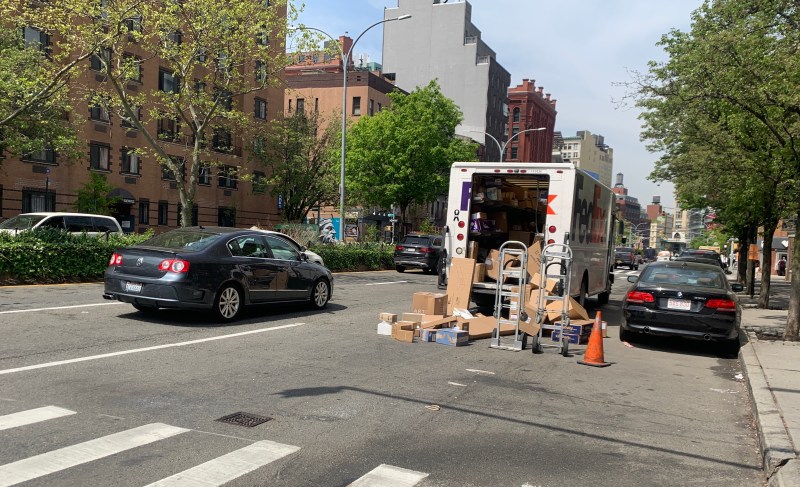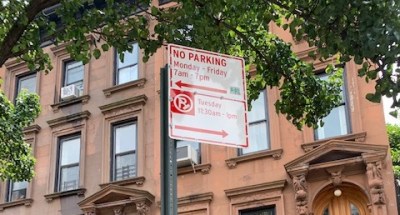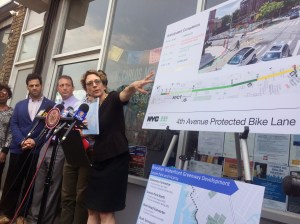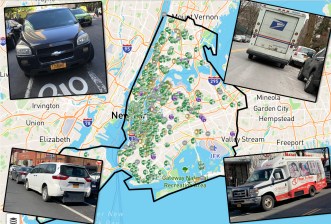Up Next for DOT: City Law Requires 500 New Loading Zones Every Year

This loading zone rule is a heavy lift.
The city Department of Transportation is now required by law to install at least 500 loading zones annually to mitigate the boom in deliveries — but the city has created only 145 of the crucial safety spots in residential neighborhoods since beginning its push to improve traffic flow in such neighborhoods in 2019. The law passed the Council late last year and went into effect immediately.

DOT has not identified locations for the hundreds of loading zones, but is establishing a method for determining where such zones would enhance safety and reduce traffic congestion, the agency said by way of background information. The creation of a system for expanding loading zones was a specific requirement of the law, which was written by then-Council Member Antonio Reynoso, who is now the Brooklyn Borough President.
The methodology will consider such factors as neighborhood density, proper citywide distribution of loading zones, plus requests from the public and elected officials.
“We’re expanding our loading zone program to meet the increasing demands of deliveries and cut down on unsafe double parking that slows traffic on our streets,” said agency spokesman Vin Barone. “We thank the Council for supporting our expansion efforts and look forward to ongoing collaboration as we implement the requirements of this bill.”
It is unclear how the “methodology” is evolving, but in the past, the DOT has had trouble siting loading zones in residential areas, even those where a minority of households have access to a car, because of complaints from drivers and their allies on community boards.
Haha! Couldn’t have planned this random shot better if I paid them!! @UPS truck using one of @NYC_DOT neighborhood loading zones in Jax Heights. Just installed like 10 of them. Need many more but it’s a start! These two employees said the “love them, need more”! @StreetsblogNYC pic.twitter.com/goqKtEOzLp
— Streetfilms (Now 1,100 films strong!) (@Streetfilms) December 28, 2020
But the DOT is at least starting to follow the law. This month, the agency presented a loading zone plan to Brooklyn’s Community Board 10, which comprises Bay Ridge. According to the presentation [PDF], residents suggested 85 locations to the agency, which then approved 31 of them. The city will begin installing loading zones signs in early spring, the presentation stated.
Late last year, the agency presented to the local community board a proposal for 22 loading zones in Astoria, but it is unclear if all will be installed.
The law’s mandate of 500 new loading zones per year was the result of a compromise with the de Blasio administration, which testified against a provision in the original Reynoso bill [PDF] that required 25 percent of curbside space be set aside as loading zones in neighborhoods with population density of greater than 75 people per acre, which is surprisingly many neighborhoods (full list here). Bensonhurst, for example, is at the low end of that scale, with Yorkville in Manhattan having the highest density at 244 people per acre.
Lest we forget how important loading zones are, even when he testified against the Reynoso bill last year, then-DOT Commissioner Hank Gutman admitted that by 2045 “our city will move 68 percent more freight on an already-constrained transportation network.”
Meanwhile, Transportation Alternatives had strongly supported the bill.
“The way we currently use our streetscape is inequitable and is harmful to every goal that this city has set around public health, our environmental and sustainability goals, accessibility, reducing carbon emissions and Vision Zero,” the group’s Deputy Director Marco Conner DiAquoi said at the time. “It’s also highly inefficient: 75 percent of the roadway space is used for the movement of storage of cars, which are unused 95 percent of the time.”




